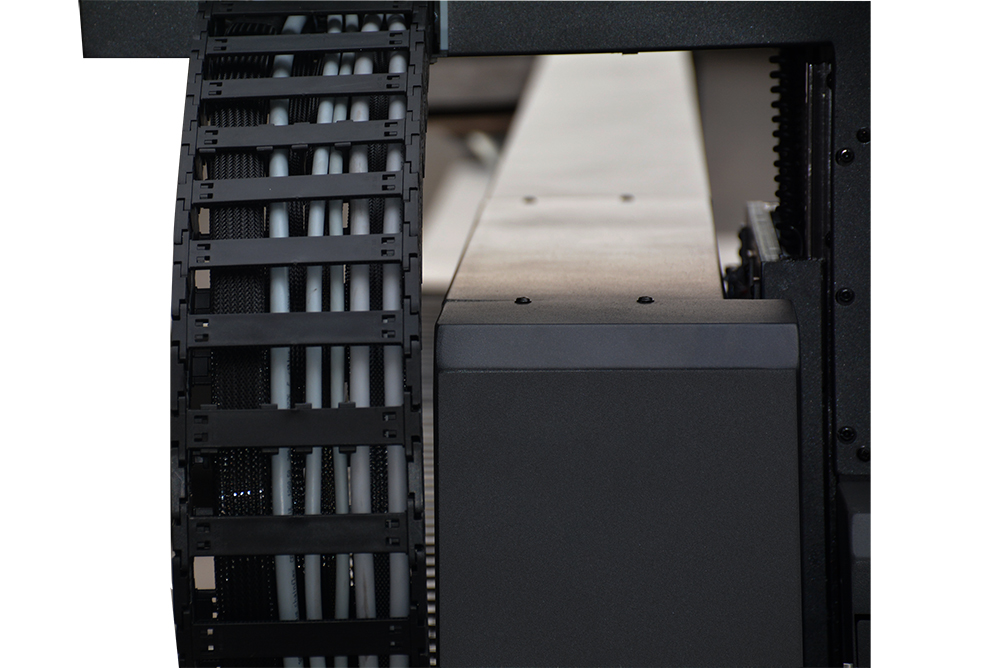UV Flatbed Printer: Troubleshooting Inkjet Nozzle Clogs
UV Flatbed Printer: Troubleshooting Inkjet Nozzle Clogs
Inkjet nozzle clogs are a common issue faced by users of UV flatbed printers, causing poor print quality, ink bleeding, and other printing defects. Troubleshooting and resolving these clogs is crucial to maintain the printer’s performance and ensure high-quality output. In this article, we will explore the causes of inkjet nozzle clogs, the symptoms they exhibit, and the steps to troubleshoot and resolve them.

Causes of Inkjet Nozzle Clogs
Inkjet nozzle clogs can occur due to various reasons, including:
Ink Drying: When ink dries inside the nozzles, it can form clogs that block the flow of ink. This often happens when the printer is not used for extended periods, allowing the ink to dry and harden.
Ink Contamination: Contaminants in the ink, such as dust, dirt, or debris, can clog the nozzles. This contamination may occur during the manufacturing process, handling, or storage of ink cartridges.
Improper Maintenance: Failing to regularly clean and maintain the printer can lead to nozzle clogs. Dust and debris can accumulate over time, especially in environments with poor air quality.
Incompatible or Low-Quality Ink: Using ink that is not recommended by the printer manufacturer, or ink of poor quality, can cause nozzle clogs due to its chemical properties or impurities.
Printer Head Age or Malfunction: As the print heads age, they may become less efficient, increasing the risk of nozzle clogs. Malfunctions in the print head mechanism can also contribute to clogging.
Symptoms of Inkjet Nozzle Clogs
Nozzle clogs manifest in several ways, including:
Poor Print Quality: Printed images or text may appear faded, blurred, or have gaps.
Ink Bleeding: Ink may spread unevenly on the printed material, resulting in blurred edges.
Missing Lines or Dots: Printed output may have missing or incomplete lines, or there may be white dots or lines where ink should be.
Color Shifts: Colors may appear off or different from the intended output due to uneven ink flow.
Print Head Errors: The printer may display error messages indicating a problem with the print head or nozzles.
Troubleshooting Inkjet Nozzle Clogs
Troubleshooting inkjet nozzle clogs involves a series of steps to identify and resolve the issue. Here are some recommended steps:
Run a Nozzle Check: Most UV flatbed printers have a built-in nozzle check function. Running this test can help identify clogged or malfunctioning nozzles.
Clean the Print Heads: Many printers have an automatic print head cleaning function. If the nozzle check indicates clogged nozzles, run the cleaning cycle. Repeat this process several times if necessary.
Manual Cleaning: If automatic cleaning fails, you may need to manually clean the print heads. This involves removing the print heads and gently cleaning them with a soft cloth and distilled water or a specialized cleaning solution. Be sure to follow the manufacturer’s instructions carefully.
Replace Ink Cartridges: If cleaning does not resolve the issue, consider replacing the ink cartridges, as they may be the source of the clog. Ensure you use high-quality, manufacturer-recommended cartridges.
Contact Manufacturer Support: If the problem persists, contact the printer manufacturer’s support team for further assistance. They may recommend additional troubleshooting steps or service options.
Preventing Inkjet Nozzle Clogs
Preventing nozzle clogs is crucial to maintaining printer performance. Here are some preventive measures:
Regular Use: Keep the printer in regular use. If it will be idle for an extended period, consider running a nozzle cleaning cycle before shutting it down.
Proper Storage: Store ink cartridges properly to prevent drying or contamination. Many manufacturers recommend storing them in an upright position at room temperature.
Regular Maintenance: Perform regular maintenance on the printer, including nozzle checks and cleanings, to ensure optimal performance.
Use Recommended Ink: Always use ink cartridges recommended by the printer manufacturer to avoid compatibility issues or ink quality problems.
Keep the Printer Clean: Regularly clean the exterior of the printer to prevent dust and debris from entering the machine.
Conclusion
Inkjet nozzle clogs are a frustrating but common issue for UV flatbed printer users. By understanding the causes, recognizing the symptoms, and following the troubleshooting steps outlined in this article, you can effectively resolve nozzle clogs and restore your printer to optimal performance. Preventive measures, such as regular use, proper storage, and maintenance, can also help reduce the risk of future clogs.
